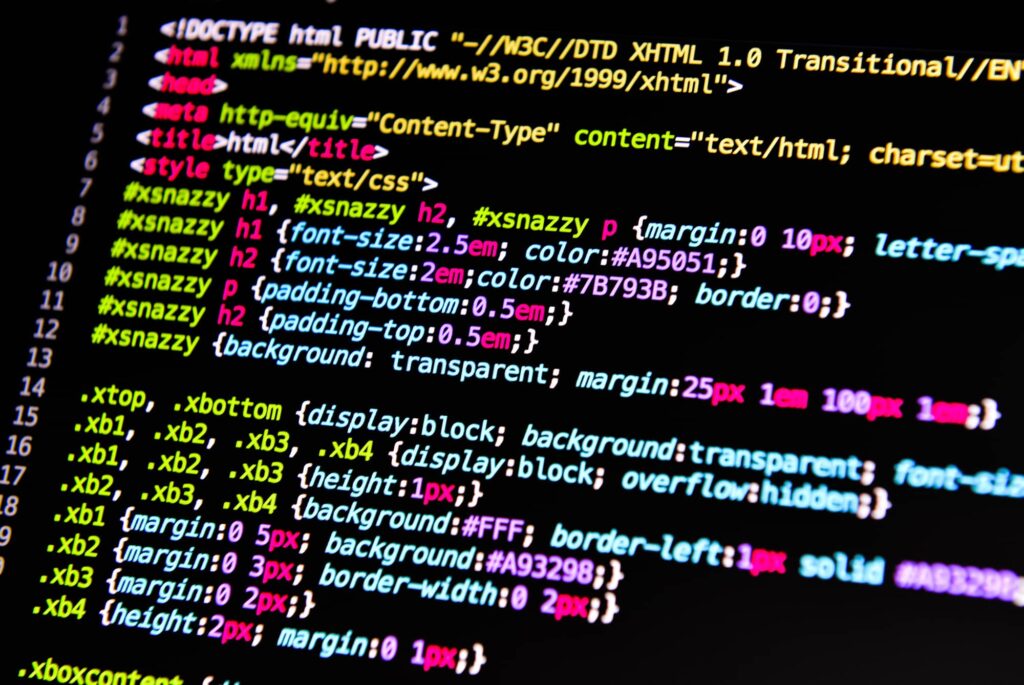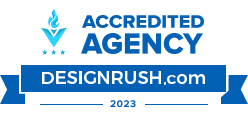Python is over 30 years old but is still one of the most popular programming languages in the last decade. Python web development has become one of the top languages that many programmers want to learn.
Many top global companies like Netflix, Dropbox, Microsoft and Facebook have been using it for several projects, it is known to be one of the fastest-growing programming languages, according to StackOverflow Trends.
With the development of new technologies like Artificial Intelligence, machine learning and the Internet of Things (IoT), Python is sought more than ever.
In this blog, let’s explore why people go for Python website development and the different ways to develop web apps with Python.
Table of Contents
1. Advantages of Python Web Development
2. What Are Python Web Frameworks?
3. How can you choose the best Python framework?
4. Python Libraries for Web Development
5. Roadmap for Python Web Development
6. Summary
Advantages of Python Web Development
1. Less Coding Required
When compared to most other programming languages, you can create prototypes and build complete web solutions in Python with lesser lines of code. Python cuts out the unnecessary coding requirements that are often found in other programming languages.
This means you can quickly create and run massive programs on Python without consuming a lot of memory and spend so much time.
2. Rich Ecosystem of Libraries
Python has so many libraries and pre-written codes that further cuts down the time taken for programming. You can access so many Python libraries, tools, and packages and the various Python web frameworks to swiftly develop the application.
3. Easy to Learn
Python is one of the most popular and easiest languages to learn for those with no coding experience. The language is very similar to C, C++ and Java, which makes it much easier for those with a little coding background to learn the language.
The language syntaxes are easily understandable and make it simple for people to easily understand the code.
4. Open-Source Platform with a Helpful Community
Python is an open-source language, which means anyone can use it freely and distribute it for commercial purposes. This allows anyone to access it at any time they want and learn the language hands-on.
The online community of Python is a very huge and active one. Many top programmers from around the world come together to contribute to the development of the language and provide amazing support to the other Python programmers.
5. Quick Program Development
Due to the simple syntaxes and fewer lines of coding, you can develop the program in a short time. You can work on your ideas, create a functional program and iterate them very quickly.
What Are Python Web Frameworks?

A web framework is a collection of modules and packages put together to simplify the development of applications on Python. With a web framework, developers can easily write applications without worrying about the small details.
Python web frameworks help developers write code on Python easily without going into the details of sockets, connections, threads, etc. The developers will write a code that connects the various pre-made modules in a Python web framework. It becomes simpler to delegate the communications, tasks, infrastructure and other time-consuming tasks with the main loop.
Since Python is one of the most popular programming languages, there are various Python web frameworks available.
How can you choose the best Python framework?
While there are numerous Python frameworks, every framework serves for specific applications. Some Python frameworks can be used only to develop small, less complicated applications, while some can handle huge applications with machine learning and AI. So, depending on the scope of your project, the technologies needed for the features, the current and future development requirements and the support required, you can assess and choose the right Python framework.
Here are some of the common Python frameworks.
1. Django
Django web development is perfect for those who want to build something great in less time with the utmost perfection. Django is one of the most commonly used Python web frameworks used for automation-based applications.
While Django was previously used for content management systems, it has grown in popularity with its web server, automated database generation, the relational mapper (ORM), and database schema migrations, interface generation and templates.
Django can be used for developing applications of any scale and complexity. Since it’s flexible enough to develop prototypes, it’s used by many startups and SMBs to create a budget-friendly, high-level application.
Some of the top companies that use Django in their application development are Mozilla, The Washington Times, Instagram and Pinterest.
2. Flask
Flask is a microframework of Python used to build a concrete foundation for the web application. It’s minimalistic and doesn’t have many features and libraries like Django. However, the lightweight design of the framework offers minimal modules needed to develop a strong application.
Flask is used by various companies like Netflix, Airbnb, Reddit, Uber and Lyft.
3. TurboGears
TurboGears is a full-stack web application framework built to bring together the best components of other Python frameworks. TurboGears offer multi-database support and have a web server and template engine. It has a powerful ORM and reusable snippets that offer great flexibility for Python web development.
4. web2py
web2py is one of the simplest Python frameworks to work with. It uses MVC built-in ticketing system with no configuration or installation files. You can run web2py on any hosting platform as it provides support for Java and Python. It offers backward compatibility that helps the developers to keep in touch with the earlier versions.
5. Pyramid
Pyramid can be used to develop both small and large-scale applications. It has an extensible configuration and flexible authorization. It allows the developers to decide on the templates, libraries and choice of the database layer.
Apart from these, there are several other Python web frameworks like Bottle, CherryPy and Falcon.
Some Python Libraries for Web Development
Python has an ocean of libraries, each of it serving its own purpose. Among the various Python libraries, here are a few important ones to know.
1. TensorFlow
TensorFlow is a popular library used frequently in programs that require machine learning. It is a computation library for writing new algorithms and can be optimized for algebraic functions. It’s very flexible in its operation and allows the developers to let the modules be used https://janesaddiction.org/generic-antibiotics/ separately. It has very easy architecture to learn.
Though TensorFlow is written in C and C++, it can be used to compile and execute Python code.
2. Numpy
Numpy is yet another Python library that’s used for machine learning programs. Numpy is used for expressing binary raw streams. It has a very interactive interface and makes complex mathematical operations simple and easy to code.
3. Scrapy
Scrapy was originally created for web crawling in Python. It is now used for the extraction of data from APIs.
4. PyTorch
PyTorch is the largest machine learning library for Python. It offers a rich API for computing complex algorithms for natural language processing and creates dynamic graphs and automatic gradients. PyTorch is integrated with Python and can hence be used with other Python libraries and packages.
5. Requests
Requests is a Python library used for HTTP requests. It helps to make the websites more interactive and user-friendly. As it allows to use the common HTTP methods, it’s best for beginners to configure HTTP requests.
6. Keras
Keras is a library used for coding deep learning algorithms. It is written in Python and helps to work with deep neural networks. It can run on TensorFlow, Microsoft Cognitive Toolkit and other similar platforms.
7-Step Roadmap for Python Web Development

If you’re planning to learn and develop web applications on Python, here’s a simple roadmap to follow.
1. Figure Out the Type of Application You Want to Build on Python
While Python has an extensive library and frameworks, you cannot learn it all in go. So, to figure out where to start, you need to have a good idea of the type of application you want to build.
There are several areas you can pick from:
- Machine learning
- Games
- Mobile apps
- Automated workflow scripts
- Websites
- IoT-based applications
Begin by analyzing your main motivation to learn Python. When you have clarity about what you want to build, you can structure your learning accordingly.
2. Learn the Basics of HTML, CSS and Javascript
For any web development, you need to have a basic idea of HTML, CSS and Javascript. This is the fundamental of building any website. You can start by learning how to create static web pages with HTML and CSS and then learn about hosting web servers, the performance and the requirements.
When learning Javascript, you can get a basic idea of the data types, loops, operators and general conventions. Depending on the type of web application you’re planning to build, you can learn its basic concepts.
3. Learn the Basic Syntax of Python
The next step is learning the basic syntax used in Python. This is a very crucial step as it forms the basis for your web application development. You can check out various resources available online to get an idea of the syntaxes needed for your web application.
But make sure not to waste a lot of time on it as you can learn more syntax as you start coding with Python.
4. Choose the Python Web Framework
After you have an idea of Python’s syntax, you can move on to exploring the various Python frameworks. Again, your choice of application in the first step will direct you to choose the most appropriate Python web framework.
After you have chosen the Python framework, analyze and learn it. There are so many libraries available on Python frameworks. So, you need to pick those essential libraries that will help you code easily and quickly.
You can use several online resources like StackOverflow and Python Documentation to get the details. You can join many other forums, ask questions, interact with the people and get your questions answered.
5. Setup the Backend Environment
With the help of the Python framework, you can set up the backend environment, including the databases and logic behind the code.
You may have to learn a bit about the databases to store and access data.
6. Learn a Frontend Framework
If you want to create a beautiful user interface, you can learn a frontend framework. There are many frontend frameworks available to easily create and design the frontend. You can research and pick one that suits your requirements.
7. Start Building the Web Application!
Install Python on your system for free and begin coding!
For beginners who haven’t written a code before, you can start by coding something small. It doesn’t matter what it is. It will help you practice the data types and syntax you’ve learnt so far. You’ll learn how to catch bugs. You’ll learn how to interact with the code. You’ll get an idea of where you stand and if you need to learn more before you start working on your project.
Summary
Among all the different programming languages, Python is one of the most useful languages to learn. You can code practically anything with Python and it is much easier for people with coding skills to start working with it. Since Python has pre-created libraries, you have a huge chunk of your work done already. You can just include the library, add the connectors and write the code in Python.
If you’re a beginner, Python is a great place to learn programming. You can start by installing Python and try your hand at coding. There are so many online tutorials and materials available to learn Python. Once you have learnt the basics, you can move on to the Python discussion forums, learn about the different ways of using the data types, syntax, operators and libraries to work on your project.
About Logicsofts: Logicsofts is one of the leading digital marketing agency that offers professional website design, digital marketing, mobile application development , SEO service and many other services at astoundingly affordable prices. Speak to our specialist for more information: +4402079935898
Author Bio
Abhay is a Digital Marketing Guru and an accomplished entrepreneur with an experience of a decade working with various businesses varying from startups to established brands. He co-founded many companies like Logicsofts, PrintYo, CrazyRise and more. He is passionate about SEO and Online Data Analytics, which plays a vital role in any business to grow and mutate as per the data results.
Follow me on LinkedIn, Facebook and Instagram

